Understanding Intellectual Property (IP)
Intellectual Property (IP) is a category of property that includes intangible creations of the human intellect. It encompasses a variety of legal rights that protect the use of creations in a commercial context. Understanding IP is crucial for anyone engaged in business or creative endeavors, as it safeguards innovations and creative works from unauthorized use.
Definition and Importance of IP
IP can be defined as the legal rights that result from intellectual activity in the industrial, scientific, literary, and artistic fields. The importance of IP lies in its ability to provide creators and inventors with an exclusive right to their creations, thus incentivizing innovation and creative expression.
Furthermore, IP plays a significant role in enabling businesses to establish a recognizable brand identity. It prevents competitors from misusing or imitating a business’s intellectual offerings, thereby ensuring a competitive edge in the market. This competitive advantage is not only vital for maintaining market share but also for attracting investment, as potential investors often look for strong IP portfolios as a sign of a company’s value and potential for growth.
Types of Intellectual Property
There are several types of intellectual property, each serving different purposes and offering varying degrees of protection:
- Copyright: Protects original literary, artistic, and musical works.
- Trademarks: Safeguards symbols, logos, and brand names that distinguish goods and services.
- Patents: Provides rights over inventions, allowing inventors to exclude others from making, using, or selling the invention for a certain period.
- Trade Secrets: Offers protection for confidential business information that provides a competitive advantage.
Understanding these different types of IP allows individuals and businesses to better protect their creations and investments. For instance, copyright not only covers the written word but also extends to software and digital content, which is increasingly relevant in our technology-driven world. Similarly, trademarks can evolve, as businesses adapt their branding strategies to meet changing consumer preferences, making it essential for companies to regularly review and update their IP strategies to remain relevant and protected in an ever-evolving marketplace.
The Role of Disclaimers in IP
Disclaimers serve an essential function in the realm of intellectual property, providing necessary clarifications regarding the ownership and rights associated with various IP elements. They are crucial for preventing misunderstandings and potential legal disputes.
Purpose of a Disclaimer
The primary purpose of a disclaimer in the context of IP is to inform the public about the rights and limitations associated with the use of particular intellectual property. Disclaimers can provide clarity regarding copyright ownership, trademark registrations, and the usage rights of a logo or brand.
By clearly articulating these details, disclaimers help to protect the owner’s rights while also guiding consumers and competitors to understand what is permissible in using intellectual property. For instance, a company may include a disclaimer on its website stating that all images are copyrighted and cannot be used without permission. This not only reinforces the company’s ownership but also educates users about the importance of respecting intellectual property rights and fostering a culture of compliance and respect for creative works.
Legal Implications of Disclaimers
Legally, disclaimers are vital because they can mitigate liability by clearly stating what a creator or business does not intend to claim ownership of. This can include the exclusion of certain uses, such as fair use, or clarifying that certain elements are not protected under IP law.
Failure to include appropriate disclaimers may lead to legal complications, as it could give the impression of broader rights than what is held, increasing the risk of infringement disputes. Moreover, disclaimers can also serve as a defense in legal proceedings, where a party can argue that they were not aware of any infringement due to the absence of clear disclaimers. In some cases, courts may look favorably upon the presence of disclaimers as a sign of good faith, potentially influencing the outcome of a dispute. Thus, the strategic use of disclaimers not only protects the rights of IP owners but also contributes to a more transparent and fair marketplace for all stakeholders involved.
Logo Ownership and IP Rights
Logos are an essential part of a brand’s identity and are often the most recognizable aspect of a business. Understanding logo ownership and the associated IP rights is crucial for effective brand management.
Establishing Logo Ownership
Establishing ownership of a logo typically involves demonstrating the original creation of the design and its exclusive use in the marketplace. Ownership is most easily secured through the registration of the logo as a trademark with the relevant government trademark office.
To strengthen ownership claims, businesses should maintain documentation that showcases the creation process and consistent use of the logo over time, which can serve as proof in potential infringement cases. This documentation may include sketches, drafts, and emails that detail the design evolution, as well as marketing materials that illustrate how the logo has been utilized in various campaigns. Such records not only bolster ownership claims but also highlight the brand’s commitment to its identity.
Protecting Your Logo Under IP Laws
Once ownership is established, protecting a logo involves a multi-faceted approach. This includes:
- Trademark Registration: Officially registering the logo as a trademark adds a layer of legal protection, making it easier to enforce exclusive rights.
- Continuous Use: Consistently using the logo in commerce reinforces its association with the brand.
- Monitoring for Infringement: Regularly reviewing the market for unauthorized use of the logo can help detect and address potential infringement issues swiftly.
These measures can significantly enhance the protection and value of the logo within the competitive landscape. Additionally, businesses should consider the global implications of their logo’s IP rights, especially if they plan to expand internationally. Different countries have varying laws regarding trademark registration and protection, so understanding these nuances is critical. Engaging with legal experts who specialize in international trademark law can provide invaluable guidance, ensuring that the brand’s logo is safeguarded across borders and that the business can capitalize on its identity without fear of infringement.
Furthermore, businesses need to educate their employees about the importance of logo usage guidelines. By providing clear instructions on how the logo should be displayed in various contexts—such as on merchandise, digital platforms, and promotional materials—companies can maintain brand consistency and prevent unauthorized alterations that could dilute the logo’s impact. This internal awareness not only strengthens the brand’s image but also fosters a culture of respect for intellectual property within the organization.
Trademarks and Logos
Trademarks play a central role in the protection of logos, enhancing a business’s brand recognition and value. Understanding the trademarking process is critical for ensuring robust protection. A well-registered trademark can serve as a powerful asset, distinguishing a company’s products or services from those of competitors and fostering customer loyalty.
The Process of Trademarking a Logo
The process of trademarking a logo generally involves several key steps:
- Conducting a Trademark Search: Before applying, it is vital to check if the logo or a similar design is already registered or in use. This search can help avoid potential legal disputes and save time and resources.
- Filing an Application: Apply to the relevant trademark office, including details about the logo and how it will be used in commerce. It’s important to provide a clear description and visual representation of the logo.
- Examination by Trademark Officer: The application will be reviewed for compliance with trademark laws. This step is crucial as it determines whether the logo meets the necessary legal standards for registration.
- Publication for Opposition: If approved, the trademark is published, allowing third parties to oppose its registration. This period is essential for protecting the interests of other businesses that may have similar marks.
- Trademark Registration: If there are no oppositions, or any oppositions are resolved, the trademark becomes officially registered. This registration grants the owner a legal presumption of ownership and exclusive rights to the mark.
This establishes a legal framework for enforcement and protection against unauthorized use. Additionally, a registered trademark can significantly enhance the credibility of a business, as it signals to consumers that the company is serious about its brand and its identity.
Legal Rights of Trademark Owners
Trademark owners have exclusive rights over the use of their registered trademark. These rights include:
- Use of the Mark: Only the trademark owner can use the registered logo for the specified goods or services. This exclusivity helps maintain the integrity of the brand.
- Legal Recourse: Trademark owners can initiate legal action against individuals or businesses that infringe on their trademark rights. This includes seeking damages and injunctions to prevent further unauthorized use.
- Renewal and Maintenance: Trademark owners must actively maintain their trademarks by renewing registrations as required by law. Regular monitoring of the trademark’s use in the market is also essential to ensure it remains protected.
These rights not only protect the logo but also the brand identity it represents, ensuring cohesion in the marketplace. Furthermore, the strength of a trademark can influence its value in business transactions, such as mergers and acquisitions, where a strong brand can command a premium price. In a world where brand loyalty is paramount, the importance of securing and maintaining trademark rights cannot be overstated.
Infringement Issues in Logo Ownership
Infringement issues pose substantial risks to logo ownership and can lead to significant legal battles. Understanding how to identify and address these issues is crucial.
Identifying Infringement
Infringement occurs when another party uses a logo that is identical or confusingly similar to a registered trademark without permission. Identifying infringement can involve:
- Market Surveillance: Regularly monitor the market for any use of logos that may infringe on your trademark.
- Consumer Feedback: Engaging with customers to understand if they are encountering confusion regarding the brand.
- Legal Consultation: Seeking legal advice upon suspicion of infringement to assess potential actions.
Being proactive in monitoring can help catch infringement early, minimizing potential damages.
Legal Recourse for Infringement
When infringement is identified, trademark owners have several legal avenues available:
- Cease and Desist Letters: Send a formal letter to the infringing party requesting that they stop using the trademark.
- Mediation and Arbitration: Engaging in alternative dispute resolution methods to settle disputes without litigation.
- Litigation: Pursuing a lawsuit against the infringer in a court of law to seek damages and injunctions against future use.
Taking timely action can significantly impact the outcome of an infringement situation, emphasizing the importance of being vigilant.

Conclusion
In summary, understanding disclaimers and logo ownership under intellectual property law is fundamental for protecting the rights of creators and businesses. From grasping the nuances of IP types to navigating the intricacies of trademarking, establishing and safeguarding ownership is essential for any brand aiming for longevity and recognition in the marketplace. By implementing proactive measures against infringement and understanding the legal landscape surrounding logos, businesses can maintain their competitive edge and foster a respected presence in the industry.
Computer Packages Inc. (CPI) is a privately owned IP management company with over fifty years of experience serving the IP community. Our mission is to be the most trusted partner in safeguarding clients’ IP assets with innovative IP management software and annuity services. Learn how we specialize in IP patent, trademark, and annuity management on our Products & Services page.


